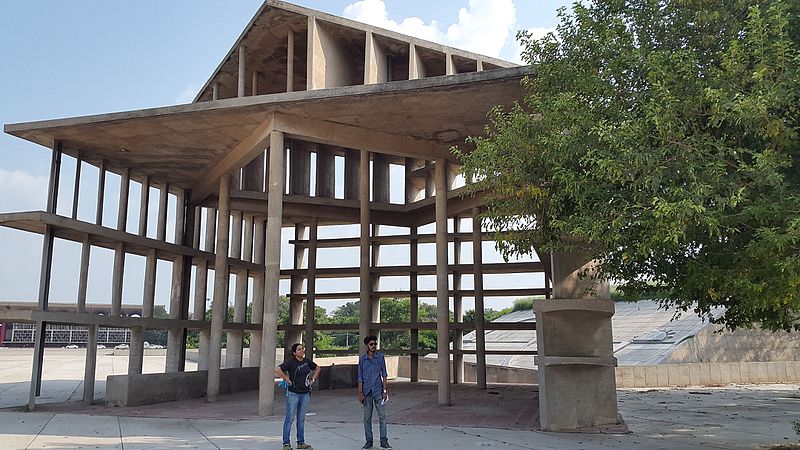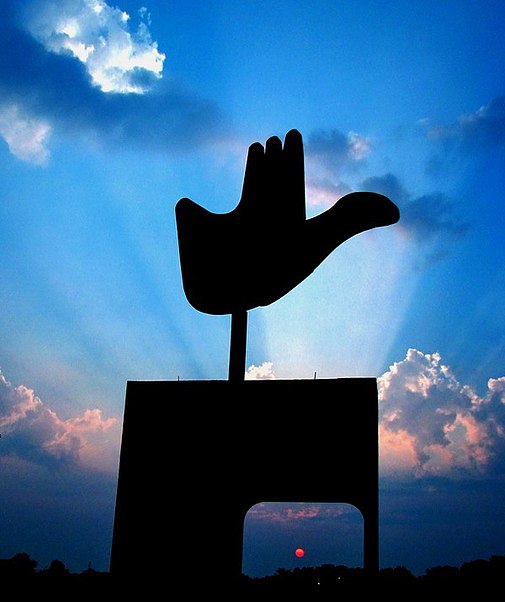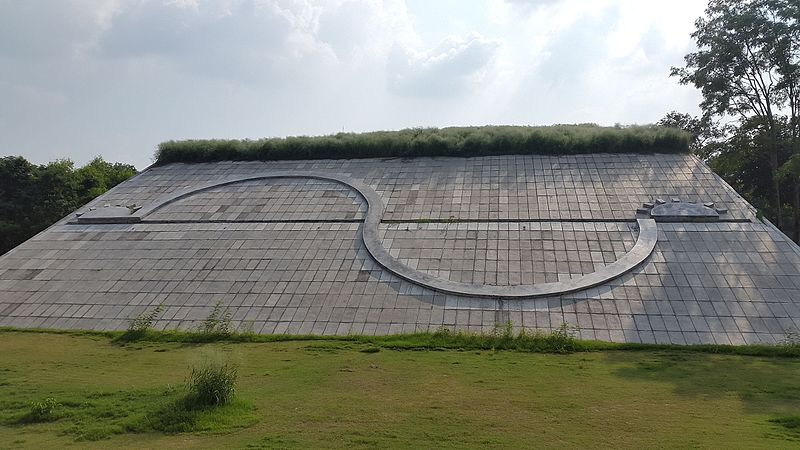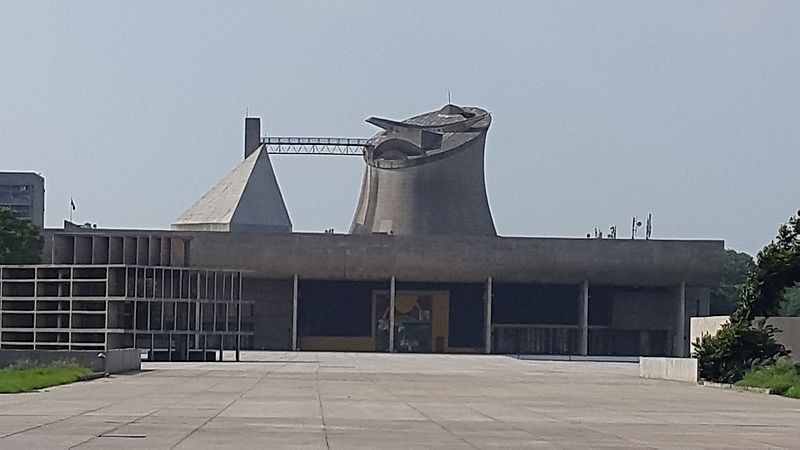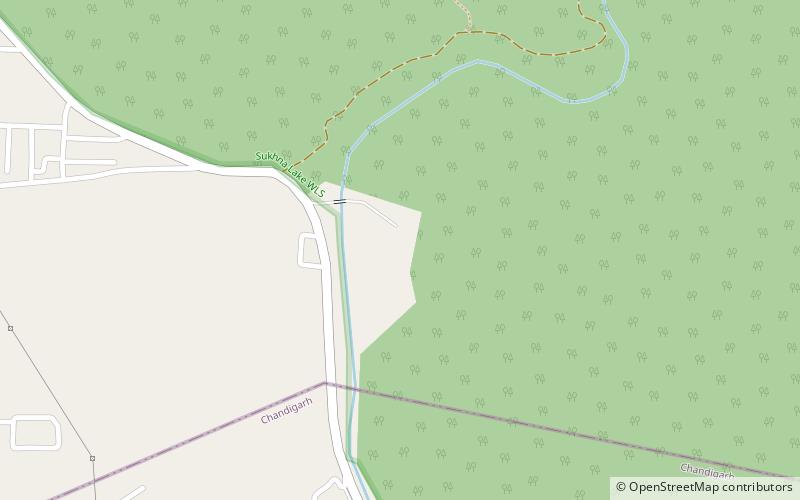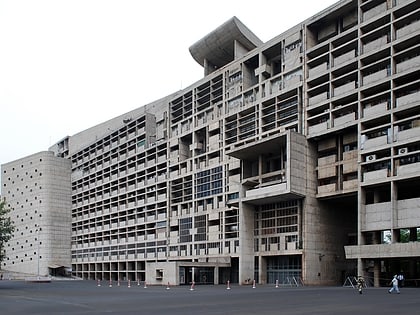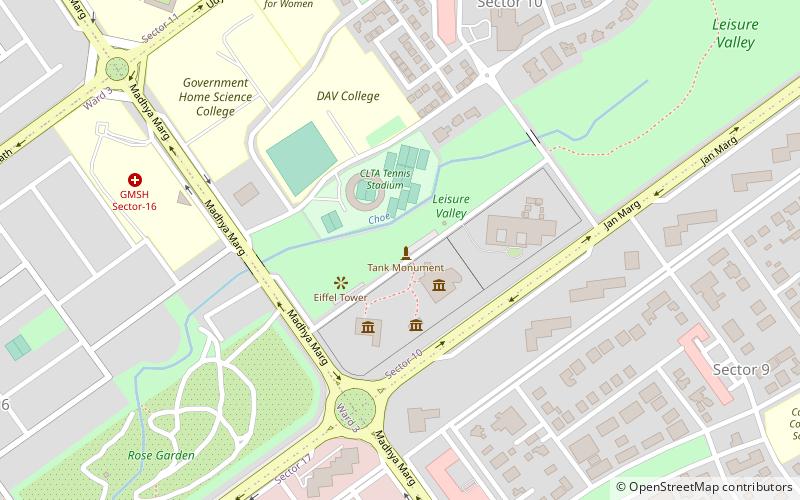Capitol Complex, Chandigarh
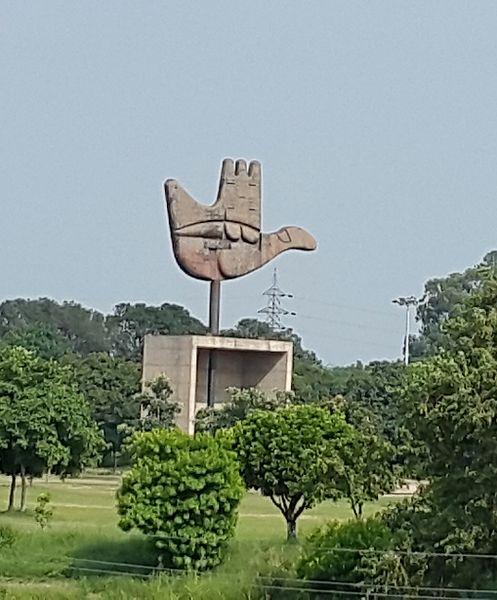
Facts and practical information
The Capitol Complex in Chandigarh, India, is an epitome of modernist architecture and a celebrated work of the Franco-Swiss architect, Le Corbusier. This sprawling compound is the administrative hub of the states of Punjab and Haryana and stands as a symbol of the city's meticulously planned urban design.
Comprising three key edifices—the Legislative Assembly, the Secretariat, and the High Court—this architectural marvel represents the monumental scale and grandeur of post-independence India's aspirations. The complex also includes the Open Hand Monument, which is the official emblem of Chandigarh, symbolizing peace and reconciliation. The layout is a testament to Le Corbusier's vision of functionality fused with bold aesthetics.
The Legislative Assembly is distinguished by its hyperbolic roof and a massive portico, while the Secretariat, the largest of the three buildings, boasts a façade of brise-soleil to counter the fierce Indian sun. The High Court, with its sweeping canopy and colorful entrance, adds vibrancy to the sober concrete of the complex.
Recognized by UNESCO as a World Heritage Site, the Capitol Complex is not just a center of governance but also a beacon of cultural and architectural significance. Its geometric forms, brise-soleil, pilotis, and raw concrete surfaces are hallmarks of the Brutalist style that Le Corbusier pioneered.
Visitors are treated to an awe-inspiring experience, with guided tours available to help them appreciate the architectural nuances and historical context of the complex. The site is a must-visit for architecture enthusiasts and those interested in the evolution of urban design in the 20th century.
Sector 1, ChandigarhChandigarh
Capitol Complex – popular in the area (distance from the attraction)
Nearby attractions include: Rock Garden of Chandigarh, Government Museum and Art Gallery, The High Court, Anerdam Wildlife Sanctuary.


